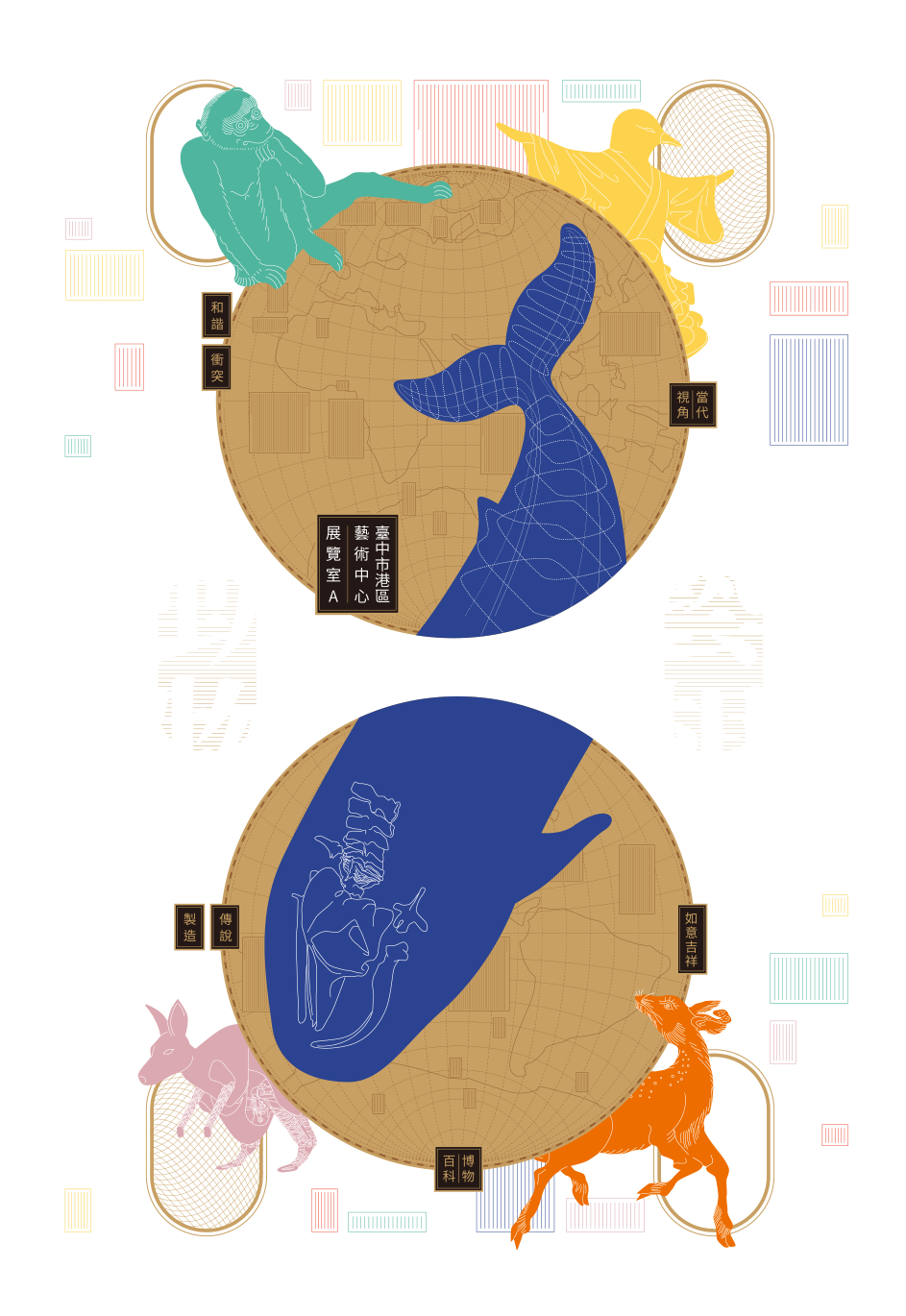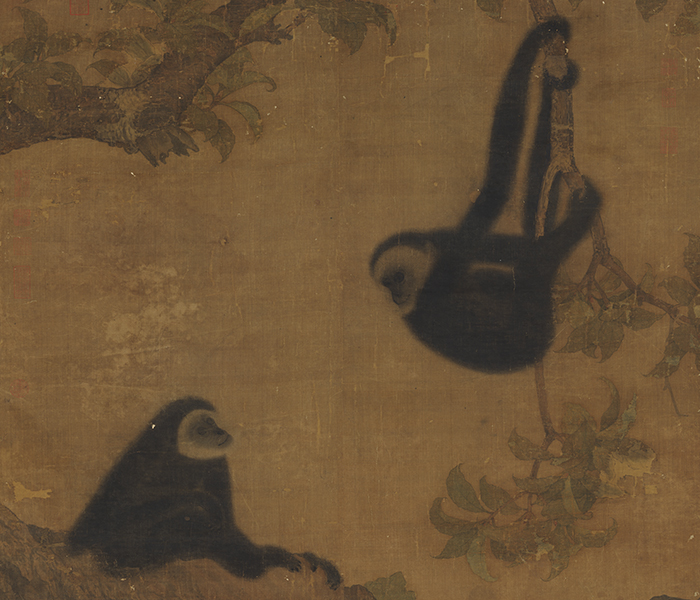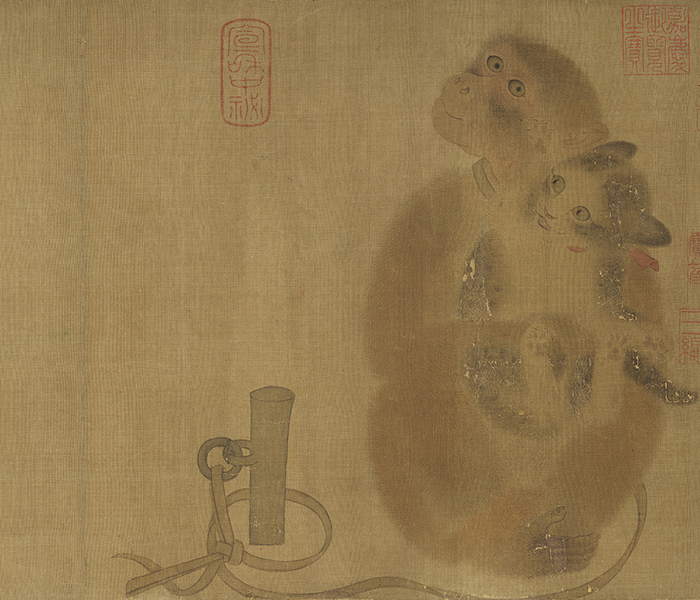Gibbons Playing in a Loquat Tree
- Song dynasty (960-1279), Anonymous
- Hanging scroll, ink and colors on silk, 166cm (H) x 107.9cm (W)
- Facsimile
An old loquat tree extends behind a rock and diagonally through this work as branches come back into the picture frame at the top, which demonstrates the artist's skill at compositional arrangement. The seated gibbon holds onto the trunk of the tree and watches another gibbon who hangs playfully from a branch above and looks down. The artist not only successfully captures the furry texture of the gibbons, but also their movements and behavior. This attention to detail as well as to rendering their spirit is a hallmark of naturalism in Sung dynasty painting. In fact, the representation of the fur is so realistic that it looks as if it could be touched. This reveals the superb use of brush and ink on the part of the artist. Besides the convincing texture of the tree and rocks, the coloring is naturalistic and elegant, and the leaves also twist naturally in space. All these contribute to the mastery of this Sung dynasty painting.
Monkey and Cats
- Sung dynasty (960-1279), Yi Yuanji
- Handscroll, ink and colors on silk, 32cm (H) x 57cm (W)
- Facsimile
Yi Yuanji, a native of what is now Changsha in Hunan, was famed for his paintings of monkeys. This painting depicts a yellow monkey hugging a kitten to its breast, while a small calico kitten that has dodged to one side looks back with angry eyes and yowling mouth, as if intending to rescue its abducted playmate. By contrast, the monkey wears a calm yet mischievous expression, and seems not in the least perturbed. Each hair on the coats of the two kittens is painted by an individual brushstroke, after which color was added to create a blotching effect. The stripes on the calico kitten are painted using light ink, and the different colors of fur are clearly layered. The same technique was also used on the monkey's coat, which is richer and much more luxuriant, yet tidy and well-organized. The artist possessed exquisite skills that perfectly captured the expressions and interactions of the animals present, creating this vivid work.

Animal husbandry in Hong Kong, Australia and Switzerland
- City University of Hong Kong
- 2018
360-degree panoramic video recordings were made of sheep shearing in Australia, a dairy farm in the mountains of Switzerland, and a pig farm in Hong Kong. A singular interactive visualization system – the Panoramic Navigator - enables the viewer to experience the conditions of the global animal husbandry industry today in an immersive environmment.

Polar Bear on Ice Floe
- Jan Martin Will (Shutterstock)
- 2011, Photographic print
This iconic photograph of a lone polar bear on a shrinking ice floe is often cited as a wake-up call concerning the threat of global warming to this species and to the planet. Polar bears rely heavily on the sea ice environment for travelling, hunting, mating, resting, and in some areas, maternal dens, but the thickness of Arctic Ocean sea ice has declined by more than 65 percent over the past 30 years, and by mid-century the Arctic could be completely ice free in the summer.

Coral Reef Bleaching
- Kenting National Park Headquarters
- Video, 3mins
In recent years, rising ocean temperatures in the seas bordering the South of Taiwan have brought about significant ecological changes, affecting all reef-dwelling marine life in the vicinity. Corals build themselves homes of limestone in the warm, clear, shallow seas of the tropics. Their reefs occupy less than one tenth of one per cent of the ocean floor, yet they are home to a quarter of all known marine species. Each coral is made up of hundreds to thousands of tiny, living coral creatures. When corals are stressed due to increasing ocean temperatures, they expel the symbiotic algae living in their tissues, causing them to turn completely white and eventually die.

GFP Bunny
- Eduardo Kac
- 2018, Eduardo Kac
GFP Bunny originally consisted of a green fluorescent rabbit genetically modified with the introduction of green fluorescent protein to create a unique living animal. Jeffrey Shaw's 2018 remix of this seminal work presents a 1:1 scale plastic model of that rabbit, which glows green under a UV light.
GFP Bunny project was a complex social event that started with the creation of an animal that does not exist in nature. It encompassed 1) a dialogue between professionals of several disciplines and the public on cultural and ethical implications of genetic engineering; 2) contestation of the alleged supremacy of DNA in life creation in favor of a more complex understanding of the intertwined relationship between genetics, organism, and environment; 3) extension of the concepts of biodiversity and evolution to incorporate precise work at the genomic level; 4) interspecies communication between humans and a transgenic mammal; 5) integration and presentation of GFP Bunny in a social and interactive context; 6) examination of the notions of normalcy, heterogeneity, purity, hybridity, and otherness; 7) consideration of a non-semiotic notion of communication as the sharing of genetic material across traditional species barriers; 8) public respect and appreciation for the emotional and cognitive life of transgenic animals; 9) expansion of the present practical and conceptual boundaries of artmaking to incorporate life invention.

Cane Toads: The Conquest (excerpts)
- Directed and written by: Mark Lewis
- Video, 5mins
Cane toads were introduced into Australia from Hawaii in 1935, as a means to control the native sugar cane beetle. Now numbering over 200 million, this invasive feral species has led to severe breakdowns in Australian ecology; the depletion of native species that die eating cane toads; the poisoning of pets and humans; depletion of native fauna preyed on by cane toads; and reduced prey populations for native insectivores. Cane Toads: The Conquest tracks the unstoppable march of the cane toad across the Australian continent, now occupying nearly a third of the country, and continuing to spread and evolve into a bigger, faster, even more robust creature.




